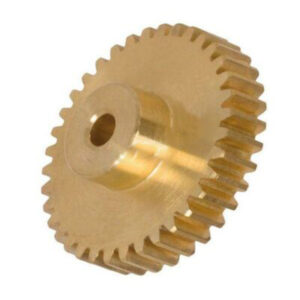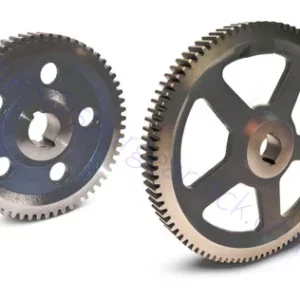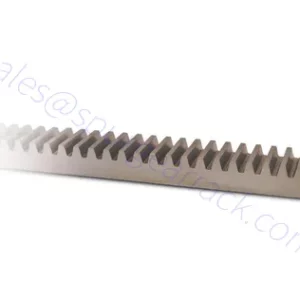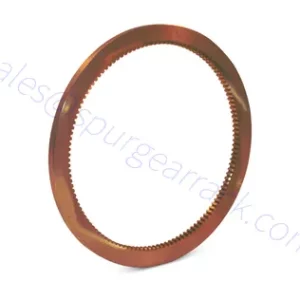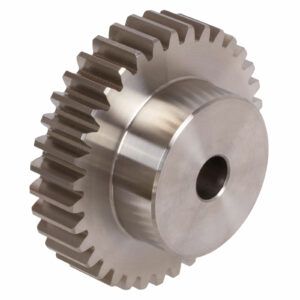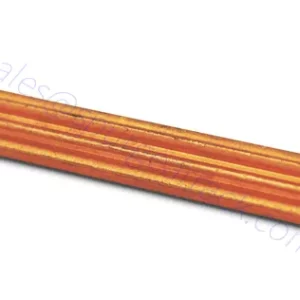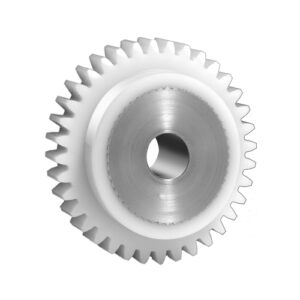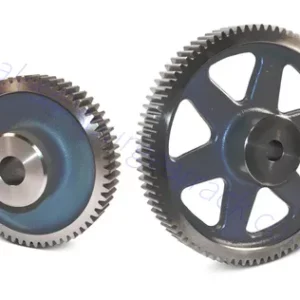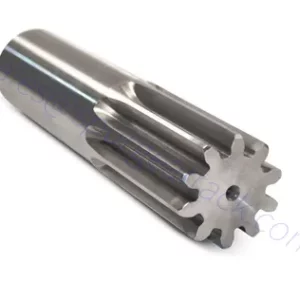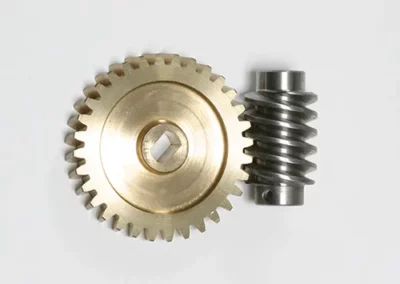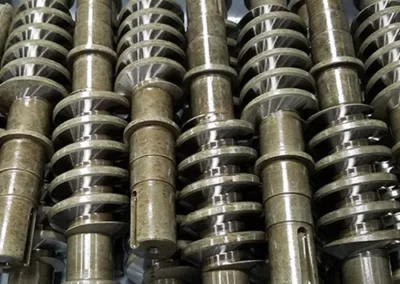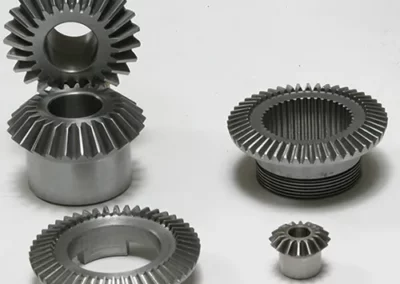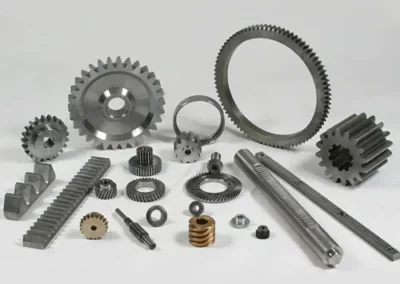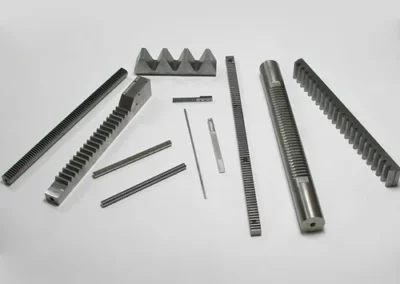Spur Gears & Rack
Spur gears are rotating machine parts with cutting teeth or gears that mesh with another toothed part to transmit torque. Gears supplied unassembled are called open gears. Open gears are divided into 5 design categories: spur gears, helical gears, split spur gear, hypoid and worm gears.
What is a Spur Gear?
In spur gears, the teeth are straight and parallel to the axis of the gear. They are connected to the cylinder using a line perpendicular to the axis.
Spur gear and pinion generate very little radial and axial force, meaning they have little influence on the gearbox housing design. This allows them to run well at low to medium speeds. But they tend to vibrate at higher speeds.
Spur gears are often used in applications where noise control is not an issue. This is because the gears generate less heat during tooth contact. But they also make a lot of noise when they collide.
China spur gear manufacturers can produce a wide variety of gears from 0.5 to 36 inches in diameter. They can provide low to high-volume production and surface grinding, ID honing, and inspection services. They can also provide custom spur gears upon request.
Gear Racks and Spur Gears
A rack is also called a rack and pinion or simply a railing. They are rectangular rods with teeth on one side, like gears. The china spur gear rack can be moved longitudinally by using gears that mesh with the racks. Among other things, spur gear rack and pinions are used in machines where rotary motion must be converted into direct or vice versa.
If a gear coupling is used for power transmission, a modular transmission must be used. Typically, the module identifies the gear type, the ratio between pitch and p.

Helical Gear Vs Spur Gear
Spur gears are commonly installed in railways, aircraft engines and ball mills. Their advantages include simplicity, efficiency and the ability to fit into tight spaces. Their disadvantages include significant vibration and lower torque. They are also less durable than other types of gear.
Despite these advantages, helical gears are not as durable as spur gears. This is because they require axial support and high-quality lubrication. Usually, they need to be replaced sooner.
How to Design Spur Gear
There are two types of spur gears. The teeth of the external gear are on the outside of the cylinder, while the teeth of the internal gear are on the inside surface. A high contact ratio can be obtained when internal and external gears are mated.
The basic elements of spur gear design include pitch circle, module, diametral pitch, and dedendum diameter. These are calculated by considering tooth profile, gear radius, and dedendum. The root is the depth of the tooth space below the pitch circle. It is usually more significant than the addendum height of the mating gear.
Spur Gears for Sale
If you need customized products, or the products you need are not found on our website, or need a spur gear catalog, don’t worry; more of our products are still being uploaded. You can email us directly, and we will reply to you within 24 hours!
What is the Module of a Spur Gear?
In the US, modules are usually referenced with an implied length unit. The module is the most common pitch indicator in countries outside the United States.
The modulus is calculated by dividing the pitch circle’s diameter by the gear’s number of teeth. A pitch circle is an arc of a circle that is measured from one point on a tooth to another. The pitch circle’s circumference is centered on the center of the gear. It is also measured in millimeters.

Save Money
Our products are inexpensive and purchased directly from China’s largest manufacturer of CNC-manufactured racks and pinions, and racks in stock are available for immediate shipment.

Trust
Customers trust us to be a complete source for any quantity of gears and racks at competitive prices.

Commitment
Commitment to treat every job as a special order with precise specifications and strict deadlines

High Quality
High-quality custom products manufactured to customer’s prints – US Standard, Circular Pitch, or Metric.

Knowledgeable Staff & Experienced Inspectors
The knowledgeable staff can provide technical input and follow-up throughout the manufacturing process. Experienced quality control inspectors with CNC gear inspections ensure products meet customer specifications.

Advanced Computer Systems
A fully integrated computer system tracks materials and production throughout the plant.
Customized and Stock Gear Racks
Customized spur gears and pinions are manufactured on the latest CNC rack and pinion machines. All racks have tight pitch tolerances, the teeth are machined with a good finish, and the pitch line to back is dimensionally stable. All of this translates into a smooth, stable ride on the pinion.
Stock gear racks with 14 ½ degree and 20 degree pressure angles in 4′, 6′ and 12′ lengths are available for immediate delivery. All of our standard off-the-shelf racks and pinions are made from mild steel with the same care and precision as our custom racks.
Gears and Racks are Used in Different Industries
The main spur gear applications are machine tools and transportation equipment, and when the application involves transmitting linear motion, they are often likened to ball screws. In these cases, the main advantage of the rack can be said to be that heavier loads can be met by using larger modules, and there is no length limitation by connecting the rack to the finished end.
When manufacturing racks, due to their bar shape, bending is often created. In these cases, a calibration process using a press is usually employed.




Lubricating Racks and Pinions
As for the lubrication of the rack and pinion, there are several methods.One such lubricating system consists of a lubricating device (main body), a pipe that conveys the lubricant, a non-return valve, and a special polyurethane pinion at the end of the pipe.
The racks and pinions in this system are lubricated when the pinions disperse the lubricant.
Since the pinion injects lubricant into the mesh as it rotates through the rack, the pitch of the rack must be the same as the module of the pinion, and for helical racks and pinions, the rack and pinion must be the same helix angle, In the opposite direction.
Customer Service
Our team produces high-quality products, but if any issues arise, we guarantee detailed and efficient pre-sale and post-sale assistance 24 hours a day worldwide. A network of qualified salespeople and technicians is ready to solve any problem in the shortest possible time and in the best possible way.
Our Services Include:
● 24-hour breakdown service.
● Gearbox or parts repairs in our in-house and established machine shop.
● A team of professional inside sales engineers assists our customers with all transmission issues.
● A sustainable partnership with high-quality and cost-effective units for all applications.
